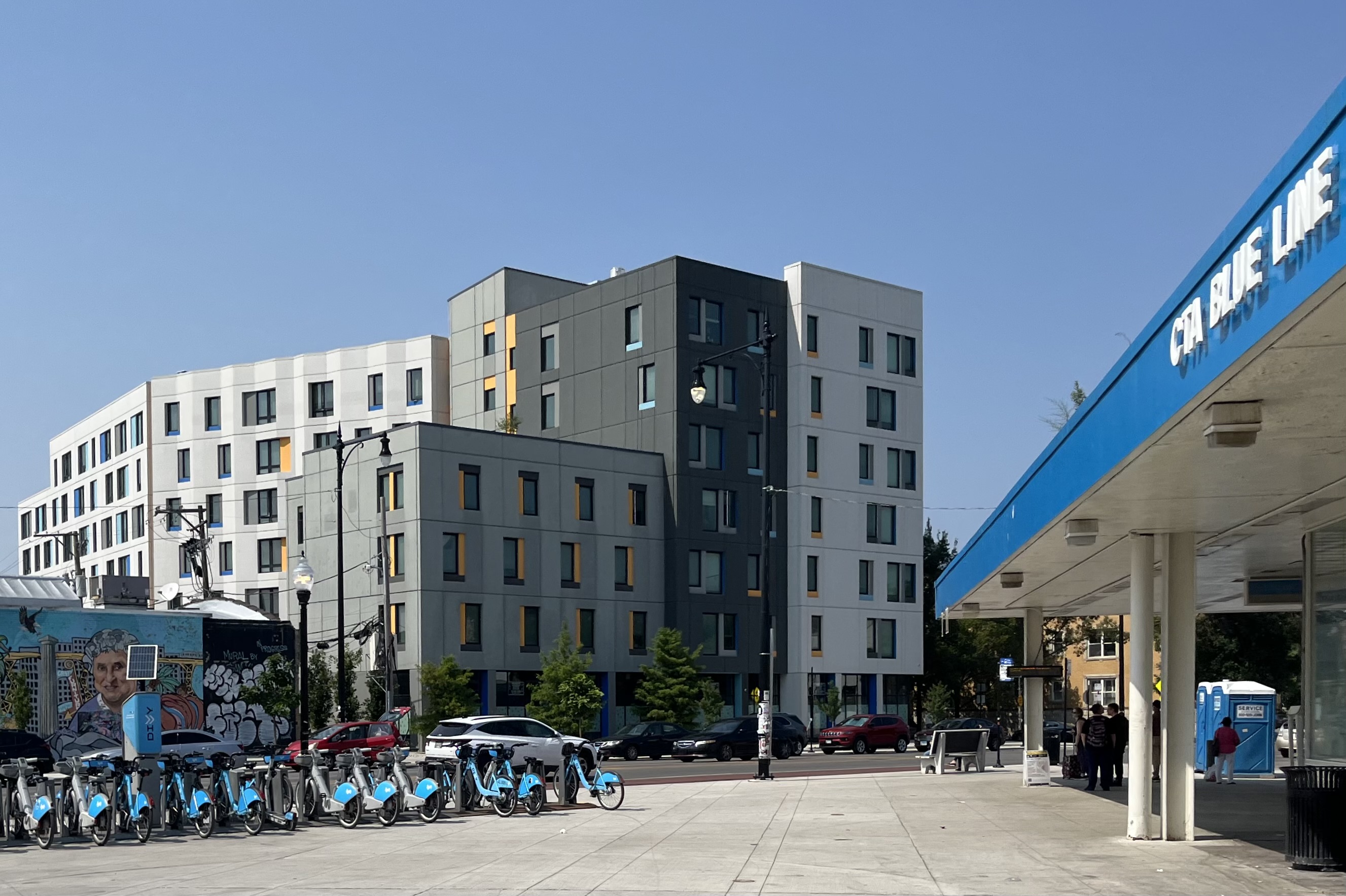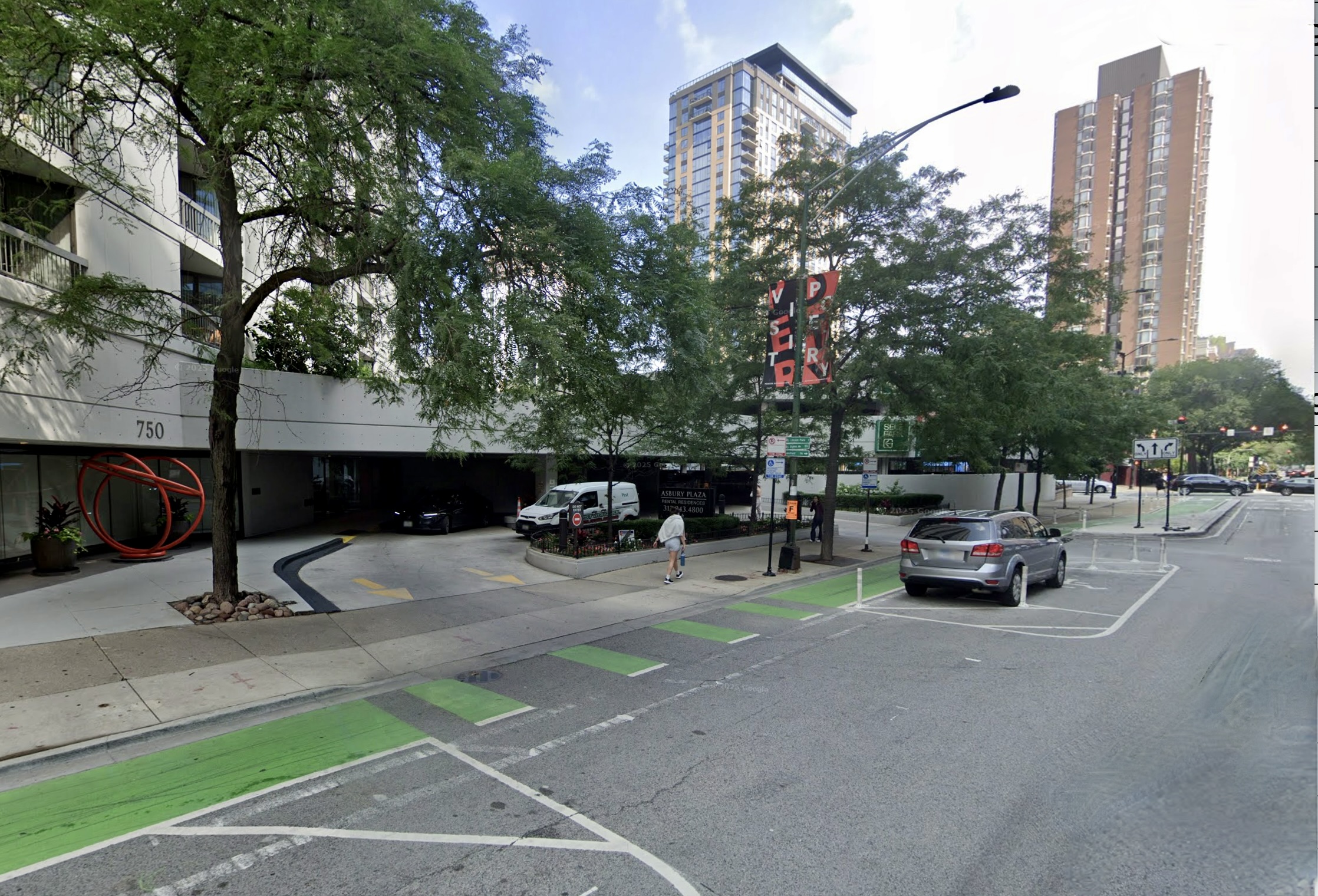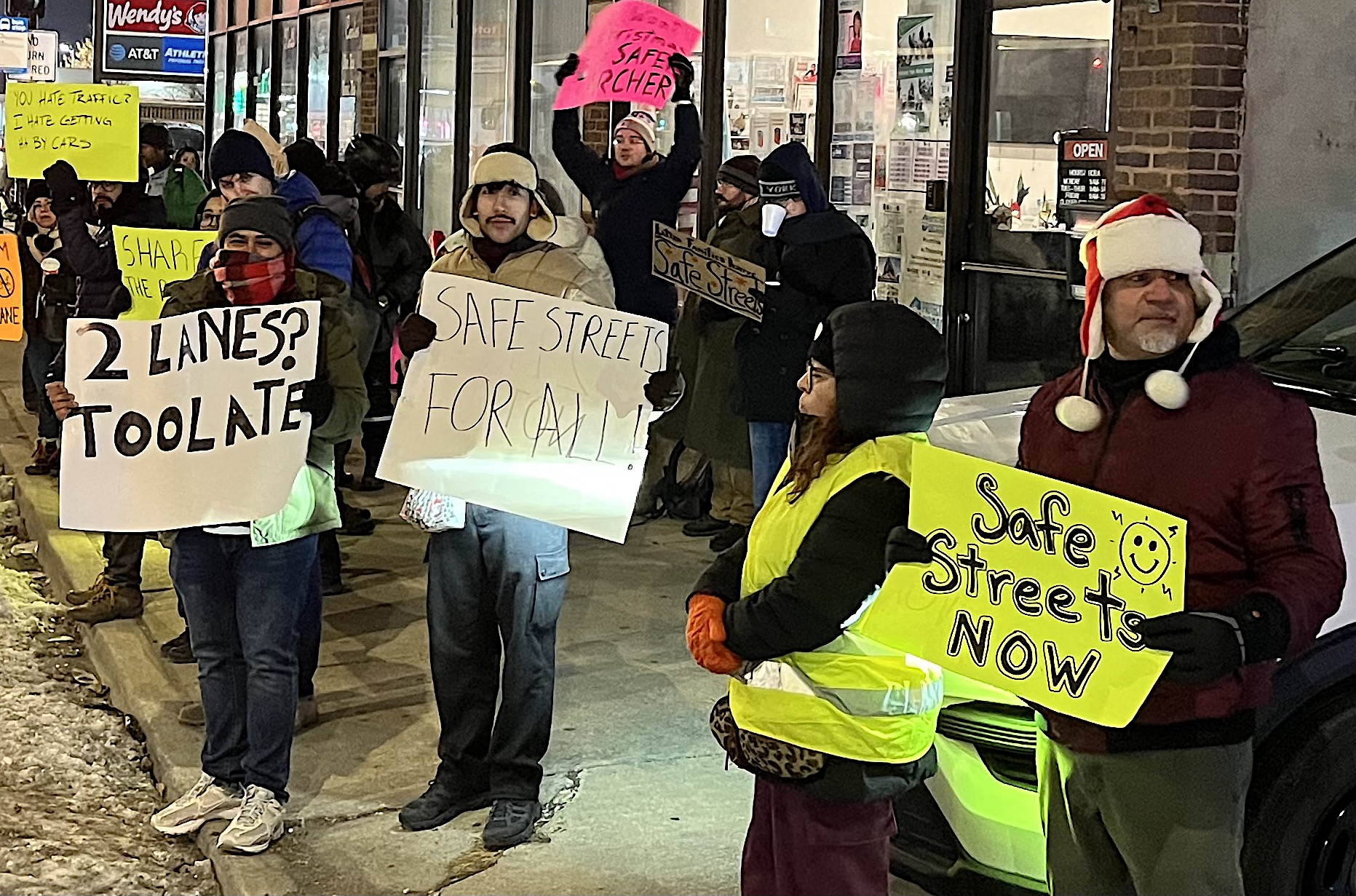
In May 2024, Juan Sebastian Arias started his current position as executive director of Elevated Chicago, an organization that helps encourage equitable transit-oriented development. Here's an interview with him from back then by Streetsblog Chicago's John Greenfield.

Arias has now spent about a year and a half on the job. However, before then he had about 15 years of experience in public policy, urban planning, community development, and strategic partnerships. He says he's been a lover of public transportation since he was a kid. Recently, I sat down with Arias to get his perspective on current efforts to avert the impending Chicagoland transit fiscal cliff. This interview has been edited for clarity and brevity.
Cameron Bolton: Some suburban municipalities have been very resistant to the transit governance reform and funding bill HB 3438, [that passed the Illinois Senate, but not the House last May], because it will give transit agencies more power to decide how many housing units and parking spaces to include on property they own. So what's your take on that?
Juan Sebastian Arias: I think there is some misinformation and some misunderstanding out there around what is actually included in the reform bill that you mentioned. So the reality is that the language, as has been written and shared of the reform bill, only enables the Northern Illinois Transit Authority [the new, more clout-heavy umbrella agency that would replace the Regional Transportation Authority] to purchase and acquire land for TOD projects and to work with local municipalities on those.
It does not give them any power to supersede local zoning regulations, or limitations on what can be built. So NITA would not be able to unilaterally develop a mix of anything that does not already comply with the local zoning. In reality, it would be an opportunity, because then all suburban municipalities and the city [of Chicago] would have a new partner in NITA to be able to support more community-driven development.
CB: Building affordable housing in Chicago can be very expensive, with costs sometimes approaching $1 million a unit. Presumably that includes transient-friendly housing. What solutions do you see that would help make building affordable housing more affordable?
JSA: I think there are a number of different ways to think about how to lower the cost of construction. There's right-sizing parking mandates. Some reforms have been passed by the Chicago City Chicago, which are much needed. [In July, alderpersons voted to totally eliminate parking requirements near train stops and high-frequency bus lines.]

We also supportive of [right-sizing parking] within the transit reform bill, because parking is a very expensive thing to construct. That just adds on to the total development cost, that then results in higher housing costs. It really makes housing less affordable, and also any commercial spaces. So that's one opportunity.
I know there are a number of folks and groups who are also looking at different innovative construction methods. Then another set of opportunities would relate back to some of the work that the current administration is doing around the Cut the Tape initiative, simplifying some of the processes, reducing some of the steps for a new development projects to get the approval.
CB: Have you and Elevated Chicago been involved in any advocacy work on the transit bill that state legislators may be voting on?
JAS: So the answer is yes, we're advocating for fully funding our transit system, not just saving us from 40 percent service cuts, but really making a transformative investment so that we can have the public transit that Chicagoans and Chicagolanders can deserve. That's one of our biggest priorities right now, as well as enabling reforms for transit [agencies] to become more proactive partners in ETOD. We've joined the larger coalition of transportation and environmental advocates, and we've been doing everything we can to make sure that people are aware that this is a challenge coming up.
CB: Is there anything else you would like to discuss about the bill?
JAS: Yeah, just that it's essential. It's critical. We need the state to approve $1.7 billion for transit. That's $1.5 billion for the Chicagoland region, and then $200 million for Downstate transportation systems too. And sometimes I think that's gotten lost a little bit in all the negotiations and in all the coverage, that the current investment in transit that's being considered does include funding for transit Downstate too.
And one other thing I'll just add is that there has been some research done by MIT and Argonne Laboratories on the economic benefits of transit. They found that for every $1 investment in transit, there's a $13 return on economic activity. So I just want to emphasize that transit is the driver of our economy too.

Do you appreciate Streetsblog Chicago's paywall-free sustainable transportation reporting and advocacy? We officially ended our 2024-25 fund drive in July, but we still need a little under $43K+ to keep publishing at full strength in 2026. We'd appreciate any leads on potential major donors or grants. And if you haven't already, please consider making a tax-deductible donation to help us continue publishing next year. Thanks!




